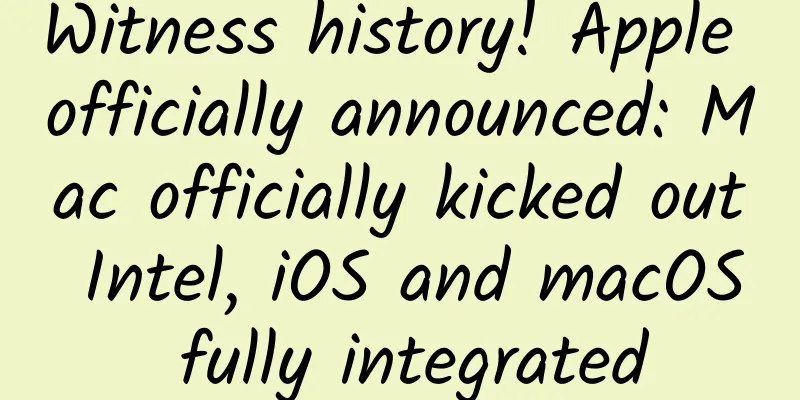Android phones are booming this year

|
In the past two years, the rapid development of Android phones is an indisputable fact. Just like a few years ago, Android was still piling up hardware and competing for pixels, this year, major manufacturers have been launching big moves like chicken blood. Not only are there pure hardware such as 2K screens and dual 13-megapixel cameras, but there are also new camera technologies such as 4K video and 50-megapixel photos. How do they change our mobile phone experience? Expected screen upgrade It stands to reason that a 6.7-inch 1080p screen has a resolution of 329ppi, reaching the so-called retina level. But the 2K screen came so quickly that in just half a year, models such as vivo Xplay3S, OPPO Find 7 Standard Edition, nubia Z7, IUNI U3 and Samsung Galaxy Note 4 have adopted this ultra-high resolution screen, with sizes ranging from 5.5 inches to 6 inches. Obviously, the manufacturer's idea is to bring users a clearer and more realistic display effect, but with it comes users' concerns about the smoothness, battery life, screen brightness and other aspects of the phone. I don't know if it's a coincidence or if this year's high-end Android models are all equipped with 2K screens in order to fully deploy 4G LTE networks. All of these phones are equipped with Snapdragon 801 or 805 processors. In the specifications of mobile phone processors, these two Snapdragon processors already support display resolutions up to 2560×2048, while the resolution of the 2K screen is 2560×1440. In addition, the processor itself also supports 4K video playback, and can output the screen via MHL external 4K monitor, so there is no problem whether it is used to watch 4K videos or output to TV. It can be said that this year's high-end Android models have long been equipped with 2K screens and the ability to play 4K videos, which is the theoretical basis provided by the hardware. As for the actual experience, the Android system under the 2K screen is still very smooth, and there is no obvious difference in response speed with the same-grade mobile phones using 1080p screens. At the same time, in order to ensure the aperture ratio of 2K screens, the panel size is generally above 5.5 inches. Such large-screen mobile phones are generally equipped with corresponding large-capacity batteries. The battery capacity of more than 3000 mAh is enough to support the use of 2K screen high-end mobile phones for a day. Therefore, whether from the perspective of hardware support or actual experience, the existence of 2K screens is reasonable. The remaining question is whether you can tell the difference in clarity between 1080p and 2K screens and pay for it. The camera is the focus of the upgrade As mentioned above, Snapdragon 801/805 already supports 4K video playback, and 4K video recording is also the focus of their upgrades with this year's high-end mobile phones. As the performance of mobile phone processors has improved, video recording of various specifications has been slightly upgraded. Currently, many models including Sony Z2/Z3 can record 4K video at 30fps, which is four times the resolution of 1080p, and 1080p has also been increased from the original 30fps to 60fps or higher. Some mobile phones can even record 720p video at 120fps. The advantage of high frame rate video is that it leaves enough space for later video editing and production. Now many mobile phones can edit videos directly on the mobile phone. We like to process the video materials shot by Z3 in slow motion or fast motion to enhance the viewing experience. And we don't need to keep the high pixels of 4K video. After all, 4K TV is not popular now. It is very common to crop and enlarge the 4K picture to highlight the subject, or scale the 4K video to 1080p or 720p. It can be said that this year, mobile phone manufacturers have spent a lot of effort to enhance the photo taking experience. The ultra-clear picture quality mode of OPPO Find 7 is one of the more outstanding features. At first glance, the configuration of this phone is almost the same as other brands' flagships, with Snapdragon 801, 3GB memory, and a 13-megapixel camera, but the 50-megapixel sample photos exposed in the early stage attracted a lot of attention. It was not until the press conference that OPPO revealed the answer. It turned out that the ultra-clear picture quality mode developed by taking ten photos in an instant and synthesizing them to output 50 million pixels. It is very easy to use. Just click the button on the lower right side of the viewfinder to call up the ultra-clear picture quality mode. The shooting process is almost the same as that of an ordinary mobile phone. After pressing the shutter, the phone will take ten photos in a row in an instant, and the user will not feel any delay. The phone will then analyze and reconstruct the physical edges and texture details in each photo, and the 50-megapixel photos are synthesized from this. Since the phone needs to process a lot of information during synthesis, it takes 4 to 5 seconds to output a 50-megapixel photo. However, judging from the final effect, the synthesized sample is still remarkable. Although the details are not comparable to the real 50-megapixel, the sample quality is already better than the 13-megapixel output. It should be said that OPPO's ultra-clear picture quality mode is a very creative approach. The multiple long exposure function of the Nubia Z7 series is also based on the principle of synthesis. Ordinary mobile phones can only achieve a long exposure time of a few seconds, but Nubia can support up to 1200 seconds, which is the main reason why Nubia claims to be able to shoot stars. After entering the slow shutter mode of the nubia Z7 series, the system will provide 12 long exposure modes. Here, taking light painting as an example, just fix the phone with a tripod, then press the shutter to start shooting, and press the shutter again to end the exposure. Since nubia achieves an effect similar to long exposure by synthesizing multiple photos, we can observe the changes in light painting on the screen every once in a while, which makes it easier for the photographer to grasp the trajectory of light painting at any time. Ordinary cameras cannot observe changes in effects during long exposure, which is also a major advantage of nubia's multiple long exposures. It is foreseeable that mobile phones will be equipped with more cameras with higher pixels in the future. After all, the current Snapdragon 801/805 already supports dual ISP and the highest 21-megapixel shooting capability. For example, HTC Desire Eye is equipped with dual 13-megapixel cameras at the front and back, and supports the use of HTC EYE Experience software to merge the images captured by multiple cameras at the same time. The ISP integrated in the mobile phone processor is fully capable of handling this. Conclusion: Android's Great Leap Forward The above technologies can roughly summarize the development trend of Android phones in the first half of 2014, which is to further improve screen resolution and optimize and enrich the camera experience of mobile phones. This is also a relatively conservative and stable upgrade strategy of mobile phone manufacturers. By converting the rapidly growing performance of mobile phone processors into software technology resources, Android has been able to get rid of the outdated idea of piling up hardware and achieve a great leap forward compared with previous years. More functions mean more choices, some of which are simple hardware upgrades, and some are real experience improvements. Are you satisfied with the performance of Android phones this year? As a winner of Toutiao's Qingyun Plan and Baijiahao's Bai+ Plan, the 2019 Baidu Digital Author of the Year, the Baijiahao's Most Popular Author in the Technology Field, the 2019 Sogou Technology and Culture Author, and the 2021 Baijiahao Quarterly Influential Creator, he has won many awards, including the 2013 Sohu Best Industry Media Person, the 2015 China New Media Entrepreneurship Competition Beijing Third Place, the 2015 Guangmang Experience Award, the 2015 China New Media Entrepreneurship Competition Finals Third Place, and the 2018 Baidu Dynamic Annual Powerful Celebrity. |
<<: Playing with photography HTC is pushing itself into the abyss of darkness
>>: Why soil health is key to mitigating the climate crisis
Recommend
If your partner has this trait, it means you have found the right person (basically you can’t go wrong)
When you are emotional and say a lot of hurtful t...
The 10 worst unicorns of 2015: Evernote and Dropbox are on the list
American technology blog VentureBeat wrote an art...
Lao Luo’s first Douyin show, 4,000 words you must read about live streaming!
Lao Luo is on the hot list again, returning to hi...
Based on 800 million massive data, here are 5 tips to increase the click-through rate of news messages
The China Internet Network Information Center (CN...
Using video previews on the App Store might be a bad marketing strategy
When Apple first released iOS 8 last September, t...
Are sun protection clothes worth tens of dollars a rip-off or are they really useful? This article teaches you how to choose the right one
Spring is here and it’s time to go out for an out...
Will taking a bath or exercising after having sex make the condition worse? Many people ignore these 4 things
I avoided the first day but couldn't avoid th...
Gaining weight, fatigue, lethargy...may be caused by a lack of this vitamin
Audit expert: Wang Xuejiang Professor of Pathophy...
In Colorado, “footprints” from the dinosaur era were discovered?
Author: Duan Yuechu and Huang Yanhong Near Rangel...
How to maximize the effectiveness of video, information flow and other platforms?
Today’s article is about: Marketing strategies fo...
Why have domestic mobile phones made a comeback?
Global mobile phone market landscape Data from th...
6 tips to teach you how to master creative marketing during the Mid-Autumn Festival!
Recently, I looked up at the bright moon and thou...
Baidu Smart Mini Programs are a new traffic hotspot
What is Baidu Smart Mini Program? Baidu Smart Min...
"Shit" suddenly appears in the ingredient list of stinky tofu. Is it really an ingredient?
Key Points ★ The weird words that accidentally ap...
How much is the corn subsidy per acre in 2022? When exactly will it be distributed? Attached are the latest policies from various places!
Corn is one of the main food crops in my country....









